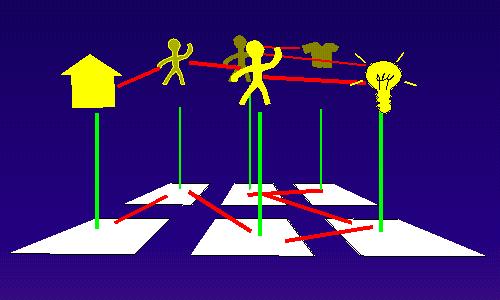
After a rather short night ride on the train I arrived in Salzburg to visit Ami-09.
The session started with keynote prepared by Emile Aarts but hold by Frits Gotefris. He looked back into the history of ambient intelligence and reported about the electronic poem, a combination of architecture music and light dating back to the 40ies. The mentioned requirements of AmI, such as miniaturization, provision of connectivity, display
 s, textile
s, textile. The definition of AmI as environments that are sensitive and responsive to presence of people appeared to me as a rather outdated vision where users are centrally positioned but the entire system is guessing magically the users desires and serving him accordingly. The examples given such as virtual presence and the virtual tapestry, for me, did not add much to credibility of that vision. Interestingly, the year 2015 was mentioned as a milestone where not just environments but also things could be networked, forming an internet of things. I was almost jumping out of my seat – why wait, we will have the 2nd Internet of Things Conference next year in Tokyo…
Besides the common challenges of coming up with new user interfaces and real world trials, two ‘dark scenarios’ have been mentioned to take care about: people building well engineered technology with bad intentions and people building bad technology with good intentions.





